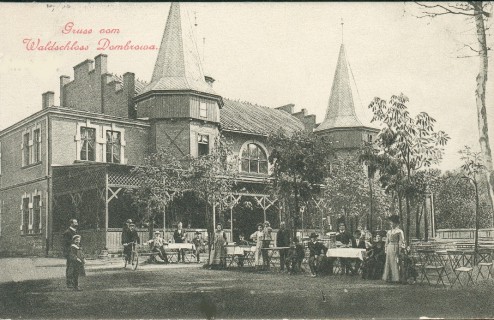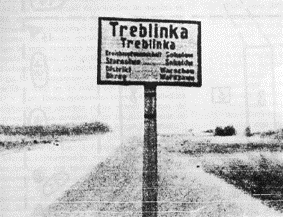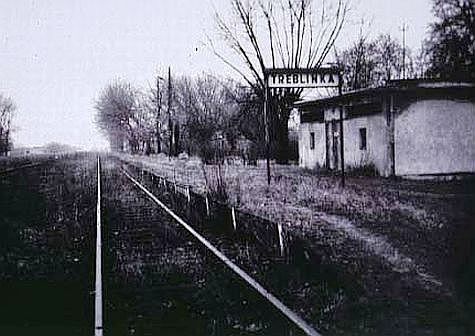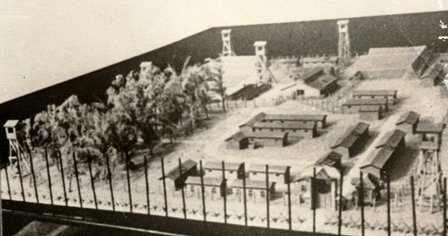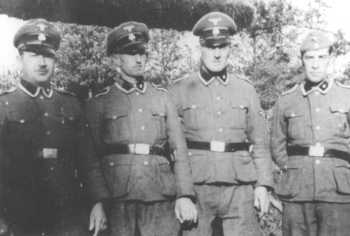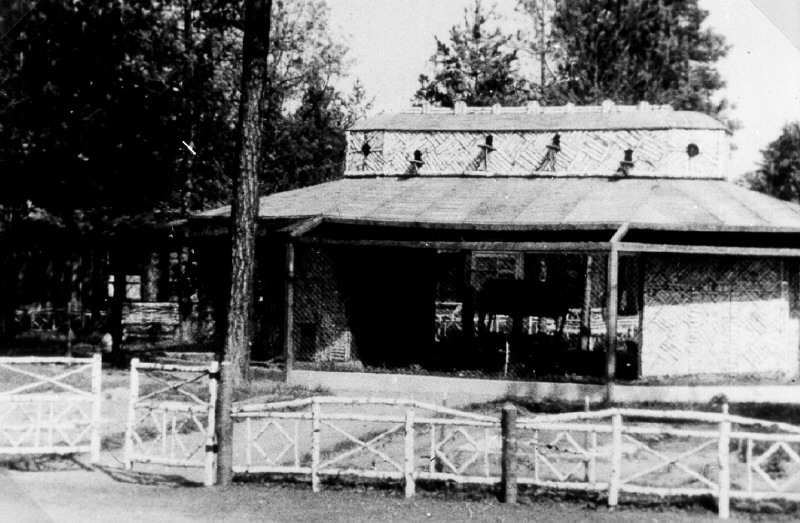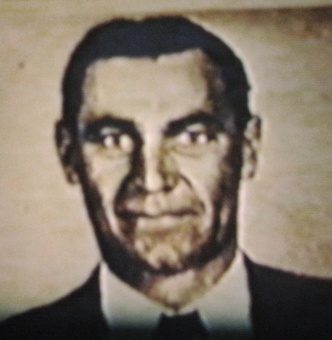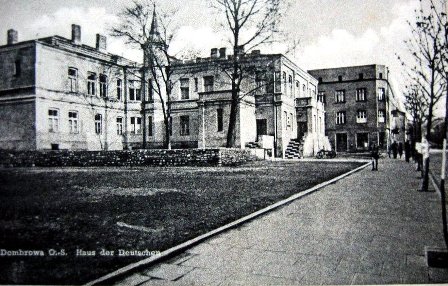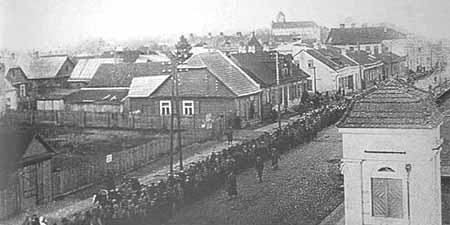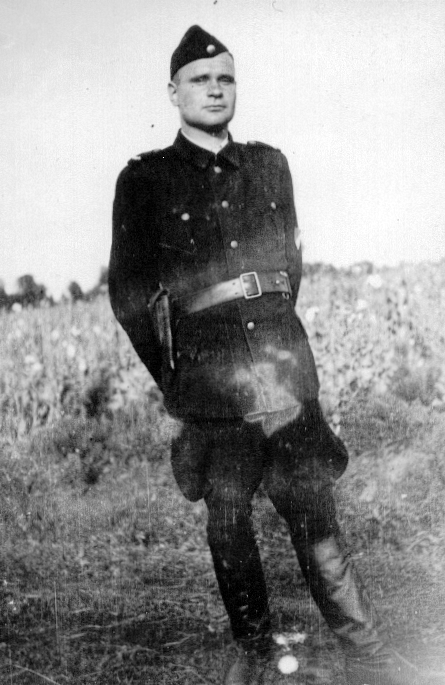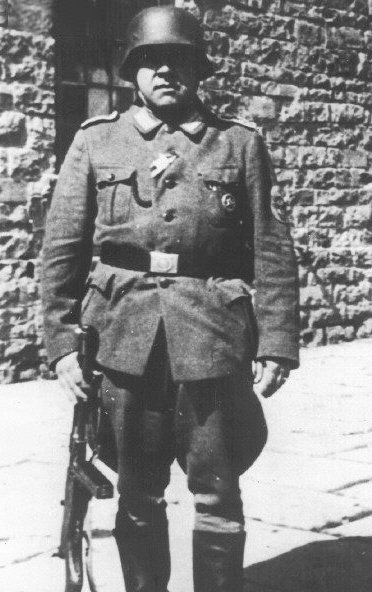Holocaust Education & Archive Research Team |
|
Survivor Stories
Holocaust Survivors Chelmno Survivors Righteous Gentiles Holocaust Recalled
| ||||||
Sonia Lewkowicz Treblinka Survivor – Testimony – Selected Extracts Federenko Trial Fort Lauderdale, USA 1978 [photos added to enhance the text]
Q: Where were you born?
Sonia Lewkowicz: I was born in the city of Dombrowa , near Grodno, Poland.
Q: And when were you born?
On the 11th of March 1922
Q: And when did you finish school?
It was already during the war in June 1924, correction 1941
Q: In December 1942 were you taken in a transport to Treblinka Camp?
Yes
Q: You were twenty years old when this happened?
That is right
Q: Tell the Court what happened, when the train you were riding in pulled into the Treblinka camp?
When the train stopped, we were chased from the cars to a big square where we were separated, women and children on one side, the men on the other side.
We went to the barrack where we had to undress.
Q: And did you undress?
Yes
Q: Who else was in the barrack where you were forced to undress?
There were other women and children, Germans, Ukrainians, and Jewish prisoners, men, with some kind of a blue band on their sleeves.
Q: Tell us what happened to you?
I wouldn’t undress completely. One of those Jewish prisoners, Jewish men, who suggested that I should say that I am a laundress. Then he ran to the SS –man, told him probably I am a laundress, and pushed me into him, and he said to this officer that I am a qualified laundress, he pulled me aside.
Q: One of the Jewish prisoners with an arm band that said you were to say you were a laundress?
Yes
Q: Was that in order to save your life?
Yes
Q: Were you really a qualified laundress?
No
Q: So when you made the statement to the SS man that you were a laundress, were you pulled out of line?
Yes
Q: Was anybody else – were any other women pulled out of the line at the same time you were?
Yes.
Q: How many others?
Another woman – one other woman.
Q: Do you remember her name?
Yes. Sonja Berman
Q: Were you given clothes to wear?
Yes
Q: In which camp was this hut where you were undressed?
In the first camp
Q: And which camp were the gas chambers located?
In the second camp
Q: Was there a pathway leading from the hut where you were undressed to the gas chambers?
Yes
Q: What was that path called?
The Himmelweg
The Interpreter: That means street to heaven, road to heaven
Q: Were you given a work assignment in Camp One?
Yes
Q: Where were you assigned to work in Camp One?
As a laundress
Q: Incidentally, besides you and Sonja Berman, who were pulled out of line, what happened to all the rest of the people in the barracks, the women who undressed?
They disappeared
Q: You mean you never saw them again?
No
Q: You said you were assigned to work as a laundress in Camp One?
Yes
Q: How many female Jewish prisoners were there in Camp One?
Twenty-five
Q: Were you all housed in one room?
Yes. We lived in one room
Q: How many laundries were there in Camp One ?
Three of them
Q: What were the three laundries, how can you distinguish them?
There was one laundry for the Germans, a separate laundry for the Ukrainians and the third one for the Jewish prisoners
Q: And in which laundry were you assigned to work while you were in Camp One?
In the laundry for the Ukrainians
Q: Mrs Lewkowicz did there come a time when you were transferred to Camp Two?
Yes
Q: Do you remember when that was?
Yes. 5th of March 1943
Q: What work were you assigned to do in Camp Two?
For the first few days, I worked in the kitchen in Camp Two and then I was moved to the laundry, which was opened there, a new laundry.
Q: When was it that you left Treblinka?
I escaped during the uprising the 2nd August 1943
Q: So from early March until early August 1943, you were in Camp Two, correct?
Yes
Q: Now Camp Two you testified is where the gas chambers were: correct?
That’s correct.
Q: Were the crematorium also located in Camp Two?
Yes
Q: Which camp was larger in terms of size, physical size? Camp One or Camp Two?
The first Camp was bigger
Q: Did everybody in Camp Two know that people were being put to death there?
Yes
Q: Was there ever occasion when you were hanging laundry when you personally heard the screams of people who were in the process of being put to death?
Once I’ve heard screams and cries from the gas chambers
Q: Was this Ukrainian Zugwachmann who you identified in photograph seventeen (Federenko) did you ever see him in Camp Two?
Yes
Q: Did you ever see this Ukrainian Zugwachmann who is in photograph seventeen in the area where the crematorium was located?
Yes
Q: Please tell the Court what you saw him do in the vicinity of the crematorium
Once when I was bringing the laundry to be dried out on this courtyard, where all the laundry would hang, I have seen him, how he shot a Jewish prisoner, and the prisoner fell down.
Q: Did he shoot the Jewish prisoner with a pistol or rifle?
With …. he would shoot this prisoner with the revolver
Q: About how far away were you so that you could see?
I was not far away, it was close
Q: Could you see the face of this Ukrainian Zugwachmann who shot the prisoner?
Yes
Q: And is the Ukrainian Zugwachmann, in the photograph seventeen, the one you saw shoot this prisoner you just described?
Yes
The Court: We will take a recess
Cross Examination
Q: Mrs Lewkowicz, you stated that you were taken to Treblinka in December 1942. Where were you immediately prior to being taken to Treblinka?
I lived in Dombrowa until the second of November 1942 and then we were transported to the city of Kielbasin near to Grogy, where all the Jews from the area were transported, and then to Treblinka in December 1942.
Q: Was the Jewish population gathered together in Dombrowa , was it guarded in Dombrowa?
Yes
Q: Would Dombrowa be considered a ghetto?
No
Q: Who guarded the Jewish population in Dombrowa?
Germans
Q: Did they have anyone else, any other nationalities assisting them?
No
Q: For what period of time did the Germans guard the Jewish population in Dombrowa before sending them on to the next city?
From May 1942, until November 1942, and then we were transported to Kielbasin, which was actually not a city, but sort of a temporary camp.
Q: Was your family from Dombrowa transferred to Kielbasin with you?
Yes
Q: And you remained at Kielbasin from November 1942 until December 1942: Is that correct?
That’s correct
Q: Did your family accompany you?
Yes
Q: Did any guards accompany the train to Treblinka?
Yes
Q: And what nationality were these guards?
Germans
Q: Up until this time, had you seen any Ukrainians at all as guards?
No
Q: When you arrived at Treblinka and the doors to the transports were opened, please describe what is the first thing you saw?
It’s hard to describe for me because I was so shocked and there were shouts and cries and the Germans would shout and I didn’t know where I am, what’s going on.
Q: Did you see anyone other than Germans meeting the transports at Treblinka when you first arrived?
It is very hard for me to describe it. I have the feeling that there were some soldiers in the other uniforms, but I really don’t remember. I couldn’t distinguish the difference.
Q: Did the train or the transport stop anywhere between Kielbasin and Treblinka?
Oh yes
Q: How long a trip was it between Kielbasin and Treblinka?
Twenty-four hours
Q: Did you see Mr Federenko meeting your transport at Treblinka?
I didn’t see anyone
Q: When did you first come to realise that there was another nationality of guards at Treblinka, other than German?
I don’t remember it exactly. I only have the feeling….. I think that either someone told me or I discovered it myself. On the assembly during the assemblies, that the Ukrainians were there
Q: The daily assemblies?
Yes
Q: When is the first time that you claim to have seen Mr Federenko at Treblinka ?
I don’t know. I don’t remember
Q: Can you recall how soon it was after your arrival at Treblinka?
Yes. At the beginning, I really didn’t know anyone. After a while, those faces started to mean something to me, and I could recognise one face from the other, but when was it exactly, I really don’t remember.
Q: Can you recall where you first saw Mr Federenko what portion of the camp and what the circumstances were?
No
Q: Who chased you from the cars to the square?
I don’t remember now
Q: Was anybody beaten or shot during that chase from the transports to the square?
Prisoners were beaten, but I was not personally beaten. I was running together with the others to the square.
Q: Did you see these prisoners beaten during this chase?
Probably, I’ve seen it, but now I don’t recall, under what circumstances, I don’t know exactly how it looked like.
Q: Do you recall who beat these prisoners?
No
Q: What colour uniforms were the Germans wearing?
Greenish gray, a combination of green and gray
Q: And what colour uniforms were these other guards that you mentioned wearing?
I never paid any attention to that.
Q: Well during your entire stay at Treblinka did you ever notice what colour the other uniforms were?
I recall later on, that the Ukrainians would have black uniforms on the assemblies
Q: Did they have any colour uniforms other than black?
I really don’t know
Q: When you refused to fully undress, did you refuse to any of the guards?
I really don’t know. I was the one who did not undress entirely. Maybe that saved my life because it caught the attention. No one forced me. No one used force in order to undress me entirely.
Q: Do you know what member of this team was, that told you to say you were a laundress?
Yes. It was one of the prisoners wearing the blue bands
Q: What was his name?
Viktor Samborski
Q: Did you see him at later times in the camp, or work with him later?
We didn’t work together but I’ve seen him a few times.
Q: Do you know who the German was that pulled you out of line after you told him you were a laundress?
Yes
Q: Did you see him later in the camp at later occasions?
Yes
Q: What was his name?
Stadie
Q: Did he hold some particular rank or title that you came into contact with him, or saw him later in the camp?
Yes he was a Stabsscharfuhrer
Notes:
Drombovar: listed in the report – should be Dombrowa
Grodno: – listed as near Grogny
Kielbasin: Kielbasin was a transit camp for Jews for the Grodno area - deportations from there to Auschwitz and Treblinka
Stade: written in the court testimony was in fact Otto Stadie. He was the Senior Administrative assistant to Commandant Stangl at Treblinka.
Sentenced to seven years imprisonment at the Treblinka trial in Dusseldorf in 1965
Sources:
The Federenko Trial Transcripts – Wiener Library London United States District Court, N.D. Ohio, Eastern Division. In the Matter of the EXTRADITION OF John DEMJANJUK aka John Ivan Demjanjuk, aka John Ivan Demyanyuk U.S. Supreme Court Fedorenko v. United States, 449 U.S. 490 (1981) Fedorenko v. United States Holocaust Historical Society * Special thanks to Marek Jaross
Copyright Chris Webb 2009 H.E.A.R.T
|
